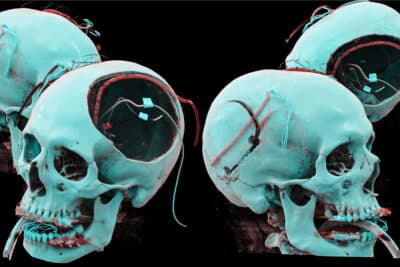The Semmelweis researchers compared the effects of popular nicotine-containing products including electronic cigarettes (EC), waterpipes (WP), cigarettes (CS), smokeless tobacco (ST) on the tissues around dental implants with non-smokers (who use no nicotine and tobacco products at all). They paid special attention to alternative products the use of which, especially by youth, is rising.
Part of their popularity is due to the false notion of being less harmful than traditional cigarettes
, says first author Orsolya Vámos of the Department of Prosthodontics, Semmelweis University.
Smokers have a higher chance of developing peri-implant diseases therefore are considered an at-risk group
, she adds.
They ranked the products based on some clinical inflammatory attributes, such as bleeding on probing in the pocket between the gum and the implant, increased fluid formation in the pocket, plaque deposition on the implant, rate of bone loss, etc.
Compared to non-smokers, all nicotine-containing products listed damaged the tissues around implants with water pipes and smokeless tobacco having the most detrimental effect.
Electronic cigarettes caused the least harm to these tissues. Overall, EC users did not show significant differences to non-smokers in many outcomes.
It is a misbelief that smokeless products or water pipes are a safer alternative when in fact they have a more detrimental effect on the tissues around implants than traditional cigarettes
, says Barbara Kispélyi, associate professor at the Department of Prosthodontics, Semmelweis University, corresponding author of the study.
The demand for dental implants is expected to grow globally by an average of 4.4%-6.3% over the next few years, market researchers project. This growth is driven mainly by an aging population, improved oral hygiene and aesthetic considerations.
Smoking can be a contraindication for dental implants as the chemicals/additives in smoke damage the tissues around the implanted tooth and impair healing while also leaving the gums more susceptible to complications and implant failure.
“The components in tobacco smoke can induce inflammation in the gums. Nicotine constricts blood vessels reducing blood flow to the tissues thus hindering the healing process,” Vámos explains. Following implant placement, we also need to factor in a healing process where the soft tissues around the implant are more vulnerable, she adds.
Whether smokers can receive implants depends on the frequency and intensity of smoking as well as other general health factors.
Oral hygiene, typically poorer in the case of smokers, is also important.
“Besides health considerations, the traumatic stress the surgery involves and the associated costs should also be taken into account. Therefore, it is up to the dentist to decide whether to proceed with the implant placement or – after careful planning and informing the patient – advise against it due to potential complications,” Kispélyi notes.
While quitting is not an option for many, it is essential to avoid smoking at least for a few days after the implant is placed.
Continuing to avoid smoking is desirable as it can prevent peri-implantitis (inflammation around the implant), which is a major cause of implant loss.
The cumulative survival rate for implants in healthy patients is 96.9% over five years. For smokers, the rate is 89,6%.[1]
[1] Sayardoust S, Grondahl K, Johansson E, et al. Implant survival and marginal bone loss at turned and oxidized implants in periodontitis-susceptible smokers and never-smokers: a retrospective, clinical, radiographic case-control study. J Periodontol 2013;84(12):1775-82. doi: 10.1902/jop.2013.120608 [published Online First: 20130222]
Illustration: iStock by Getty Images – AleksandrYu


